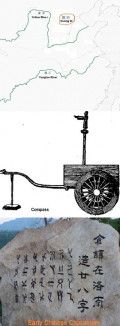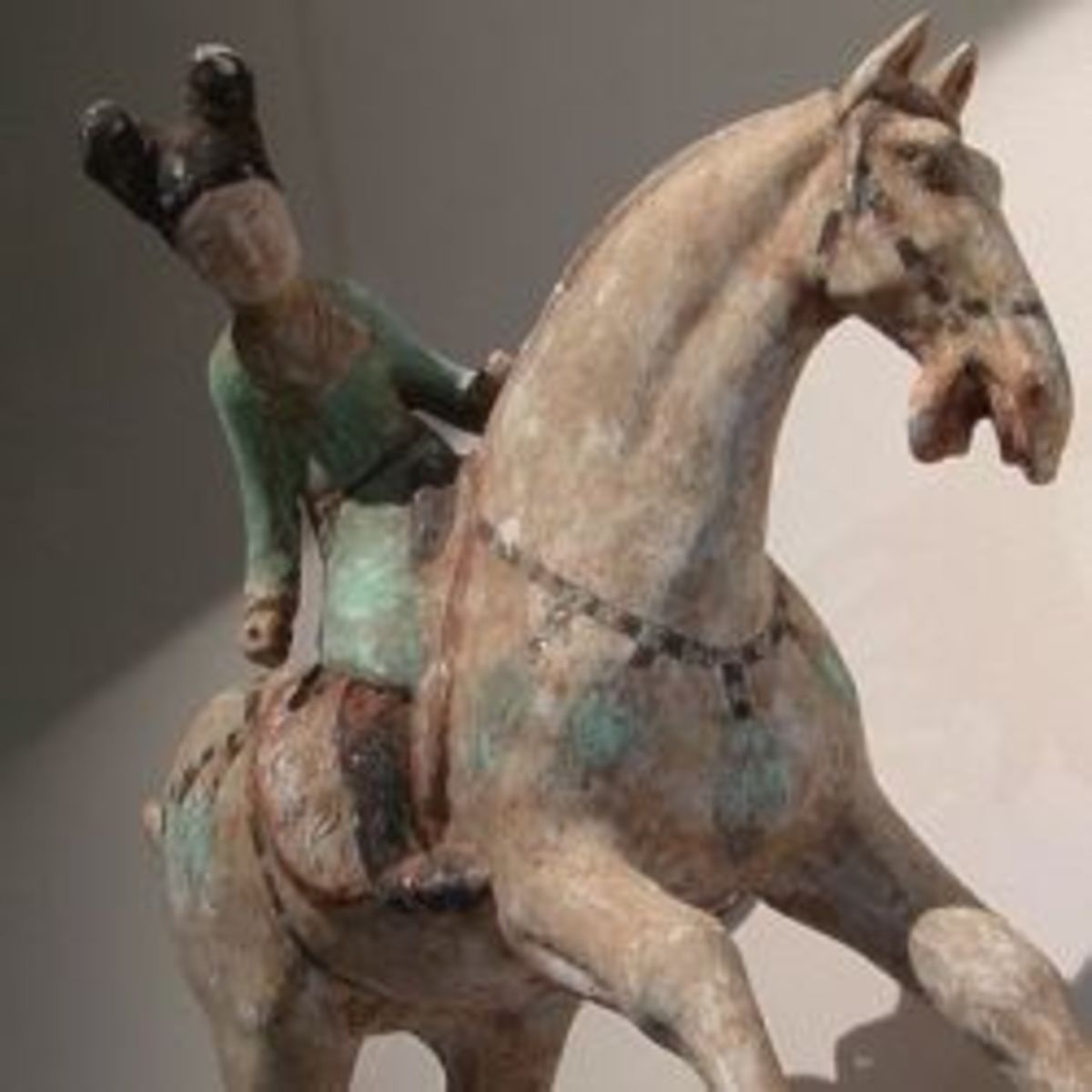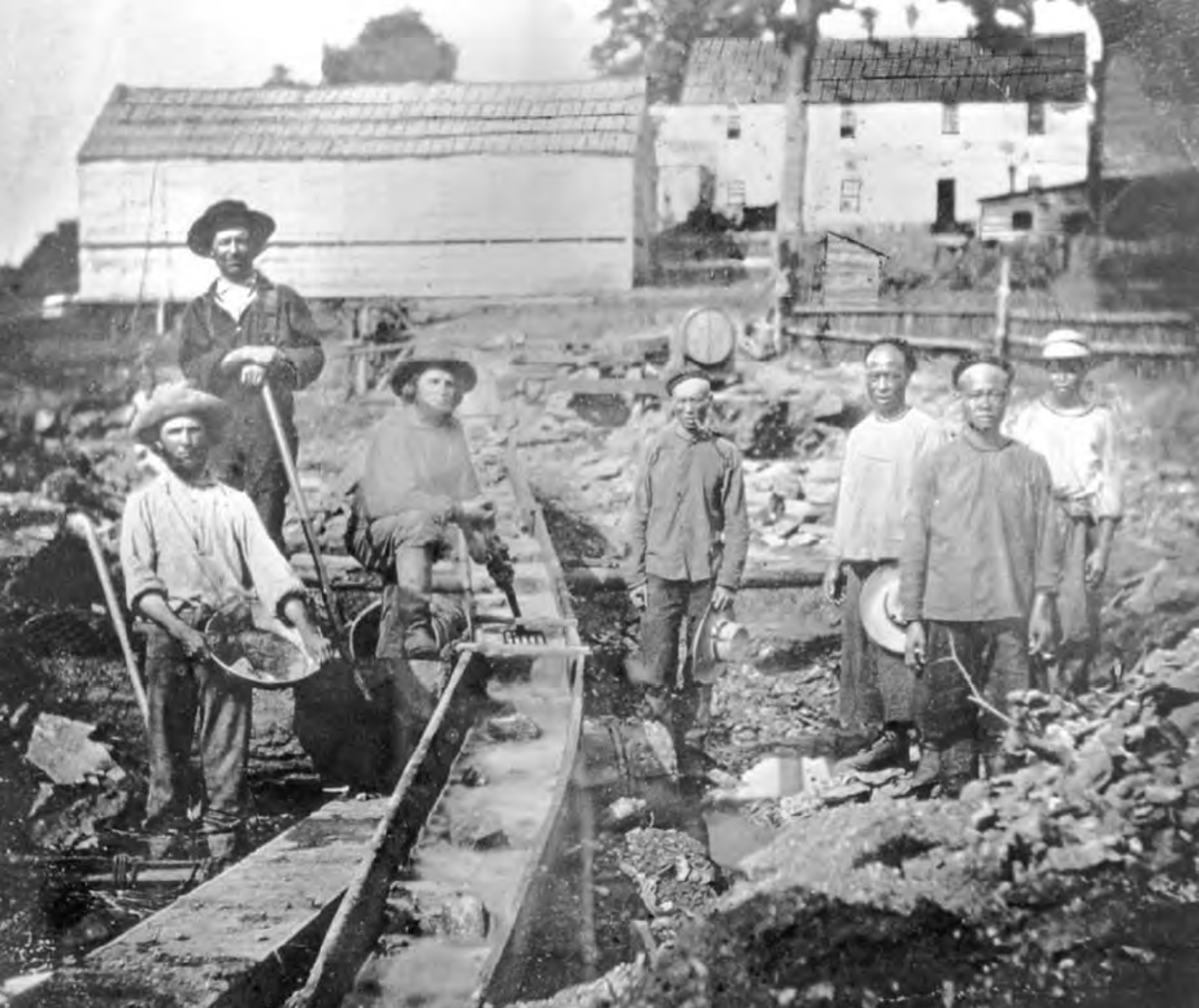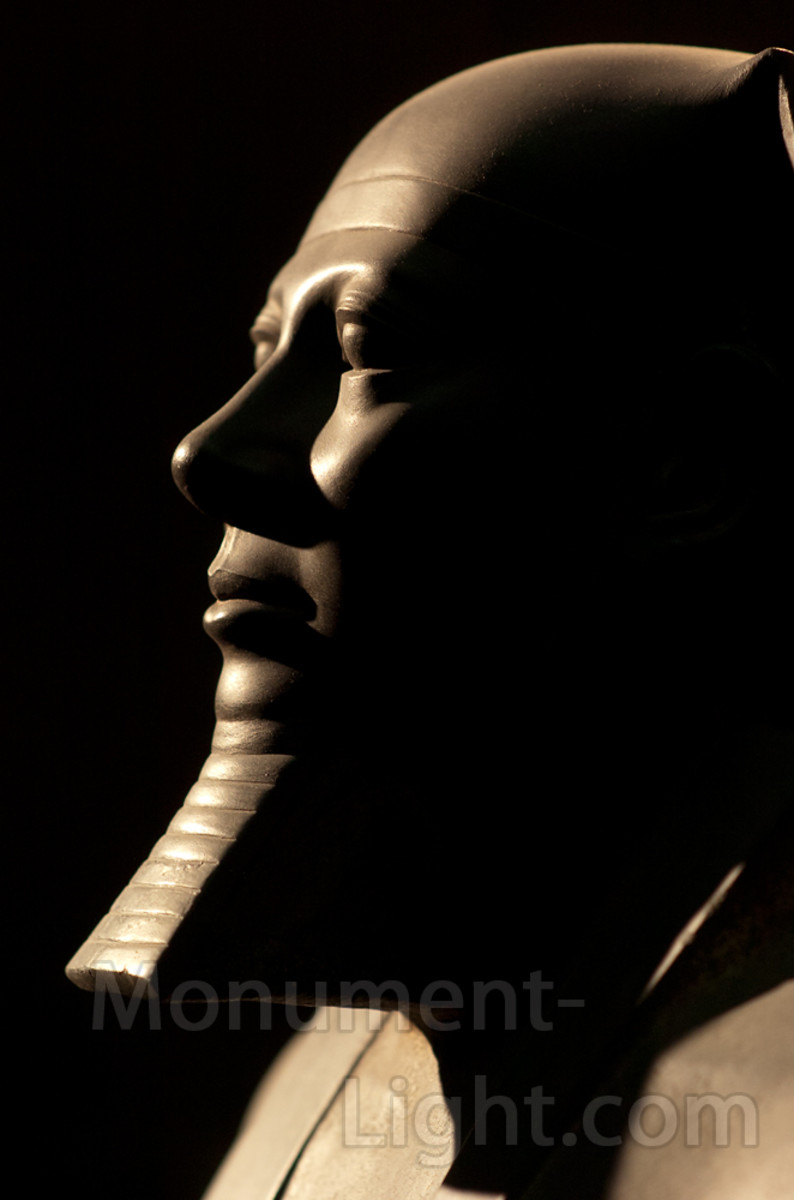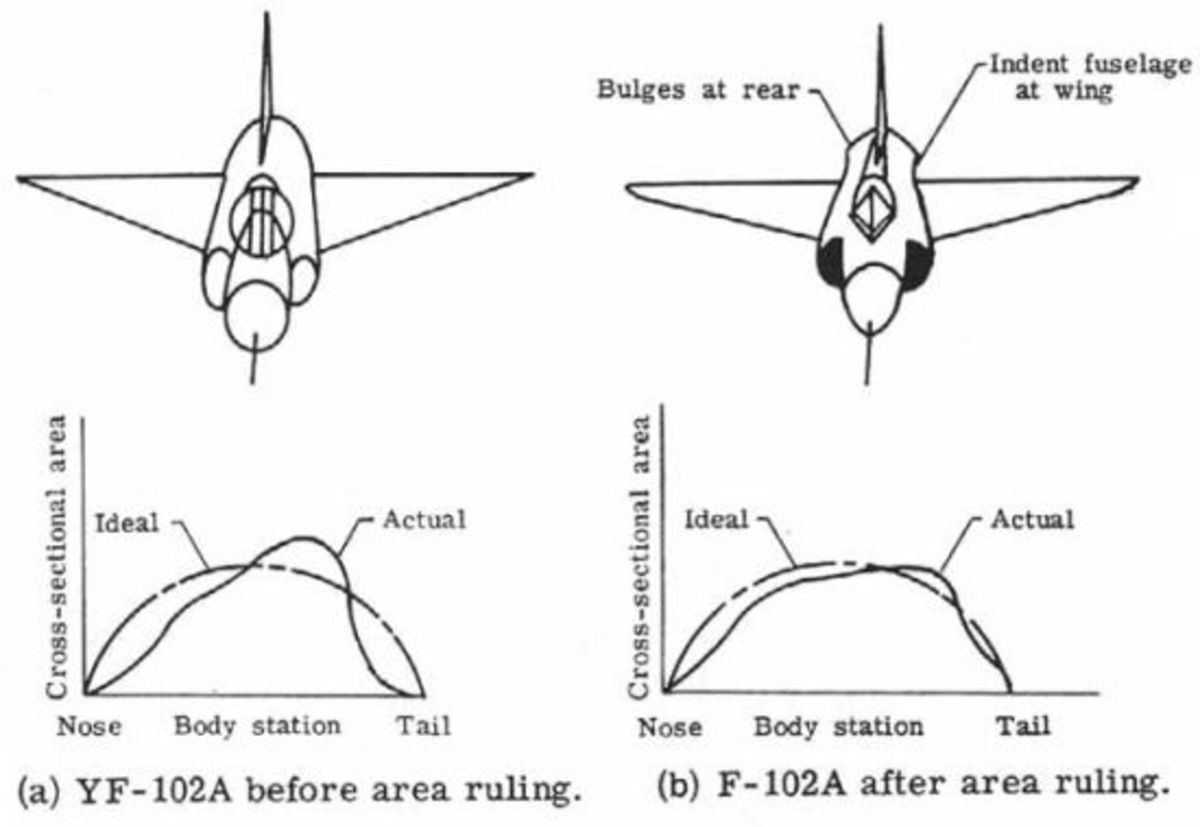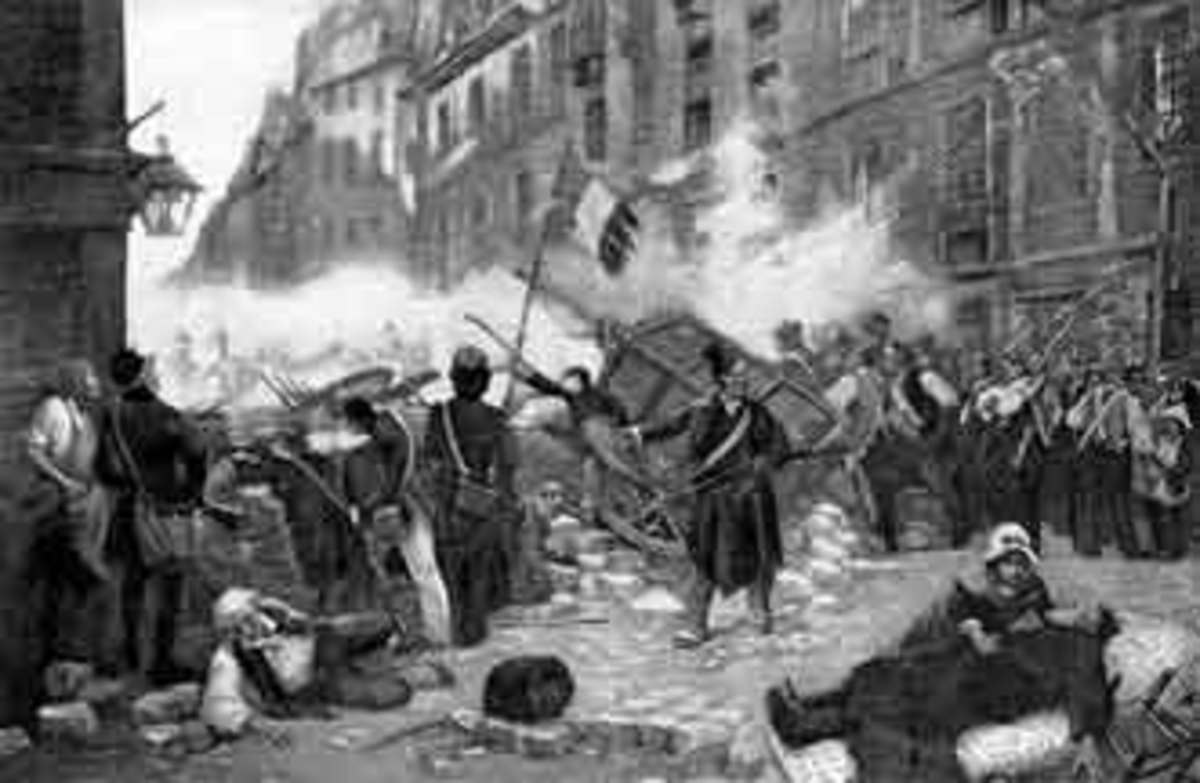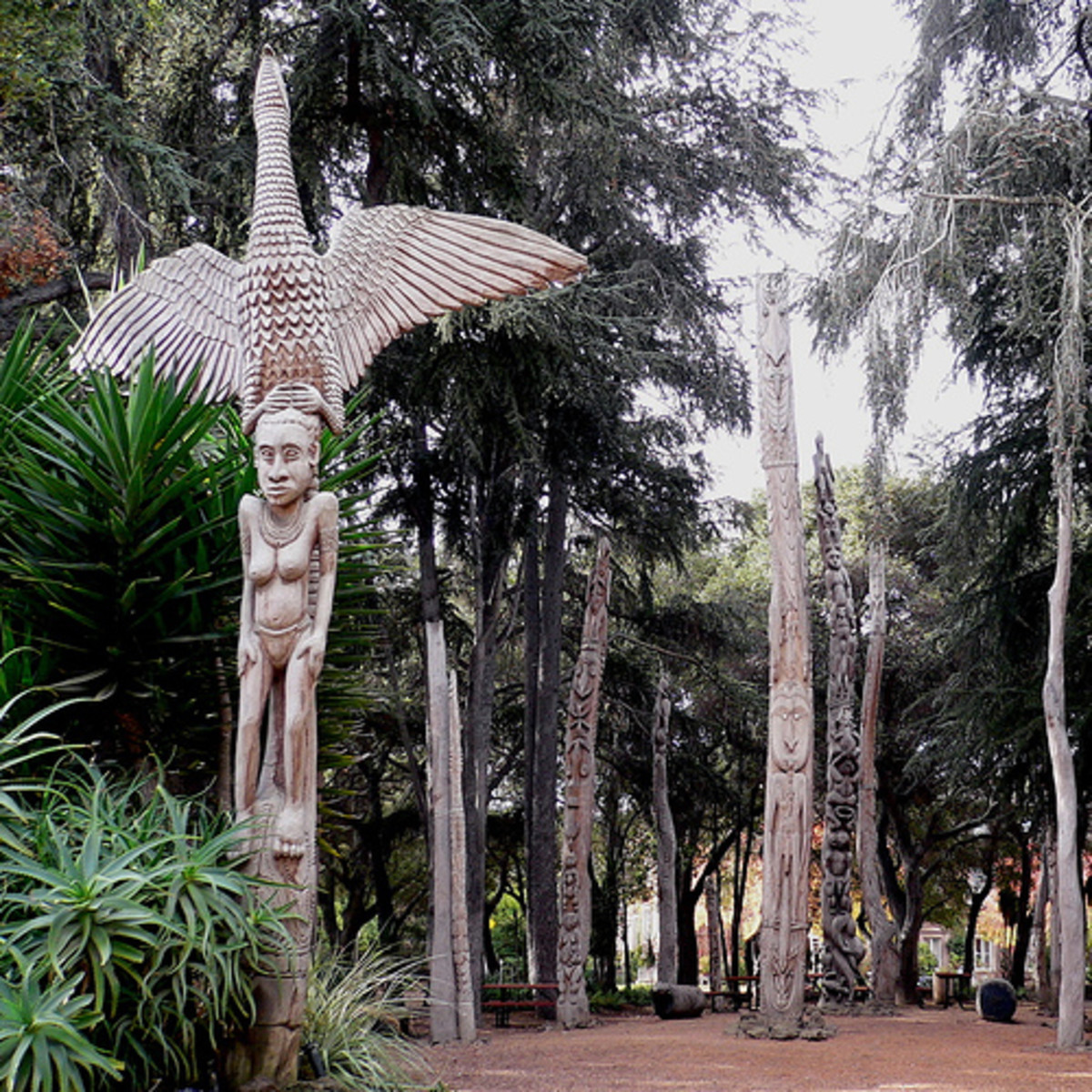A brief overview of Chinese history
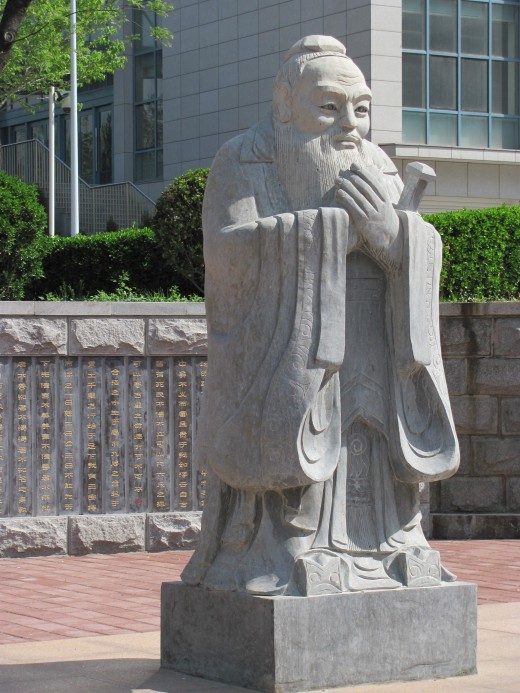
China has an ancient history that stretches from 2200 B.C. to the current. China currently has the largest population, the third largest economic system, and possibly the greatest potential for social reform. First, I’m going to look at China’s history from its origins till now. History has directly shaped the way that modern China views the world. This includes religion, politics, economics, social structure, and education systems. Then I’m going to analyze China’s various structures and how they function. First to understand anything about China, one must first understand that China has many ancient religions such as Confucianism, Taoism, and other indigenous religions and China’s long history is what influences its belief systems.
Origins
[A good deal of this information about China’s history has been taken from a condensed Chinese History by Paul Frankenstein as cited in the bibliography.] China’s history begins with the Xia, Shang, and Zhou “dynasties”. It is important to note that the Xia, Shang, and Zhou have been thought of by many scholars as coexisting during the same timeframe. The periods of each group however mark the dominance of one group over another. The Xia ruled from Xia c. 2200 - c. 1750 BC. According to An Zhimin, not much is known about the Xia, and up till recent archaeological evidence, many had believed them to be a myth (199). They were known for their black lacquered pottery. Besides this little is known about them other than that they had a writing system that most likely led to the Shang Dynasty’s oracle bones.
The Shang ruled from c. 1750 - c. 1040 BC. They were the most advanced bronze workers of their day. Mainly their art had a lot of bronze jars called “p’ou” according to Stephen Guglielmi (3-10). They also are the earliest record (and possibly most complete) of Chinese writing. One thing we know from these writing is that they were probably the most blood-thirsty pre-modern civilization. If a king were to die they would also sacrifice a hundred or so of his servants along with him. They also would hold human sacrifices to consecrate buildings and other ceremonial events. The methods for sacrifice ranged from beheading to burying alive. They passed on the kingship not from father to son, but from brother to brother until there were no more brothers then it went to the oldest maternal nephew.
The Western Zhou (c. 1100 - 771 BC) was much different than the Shang. For one, they weren’t so big on human sacrifice. For another, they weren’t as good at bronze working as the Shang. Despite this, they were still ages ahead of western civilizations at bronze working. They also passed on the kingship patrilineally. According to Li Feng on page 116, the Zhou functioned less like a kingdom, and more like a people group with servants. In fact, the Zhou didn’t own all of what is today China, rather they were west of the center of China, hence “Western Zhou”
The Easter Zhou were from 771 - 256 BC. Zhou was attacked by barbarians and was forced to move eastward. Because of this geographical shift, their power also declined. This length of Zhou Rule is marked by two periods, the “Spring and Autumn Period” and the “Warring States Period. The “Spring and Autumn” period (722 - 481 BC) gets its name from a book called “The Spring and Autumn Annals”. This period was rich with philosophy and new ideas. From this era we see the beginning of Taoism, Confucianism, and Legalism. These three will be discussed later on in this paper. The Warring States Period (403 - 221 BC) is marked by large scale catastrophic battles. According to historical information, it is common to find armies of nearly half a million going at it. Sieges that lasted years devastated China and led China from their origins to the Early Empire era.
The Early Empire
This period begins with the age of the Qin (221 - 206 BC) which also marks the beginning of Chinese emperors and therefore empires. Qin Shihuangdi was the first emperor and conquered the un-unified China due to his legalism and cruel practices. Another reason his conquest was so successful was that in the “iron age” he had a large amount of iron and therefore had more iron weapons than his opponents. One of his major strategies was linking together old defensive walls into a type of great wall. This is not the same as the great wall that stands today. Qin died, marking an end to his short lived rule. His line did not endure mainly because of his cruel practices that curtailed his rule and led to a revolt. This gave way to the Han.
The Han dynasty [Earlier Han (206 BC - AD 8), Wang Mang Interregnum (AD 8 - 25), and Later Han (25 - 220)] wrote most of China’s history, therefore our current perspectives on China’s history is mainly seen through their eyes. It is important to note that the Han are considered by most scholars to be the greatest Chinese dynasty to ever exist. The Han dynasty perfected the “dynasty roles” which every successive dynasty would follow. The Earlier Han dynasty and the Later Han dynasty are separated only by a brief intermission by a man named Wang Mang who had no royal blood. The Han family line then took back control and reigned for another two hundred years. At the end of their rule they could not keep the nation divided due to population shifts and barbarian raiders. Their fall marks the beginning of 350 years of chaos and disunity.
Next is the time period of the Three Kingdoms (220 - 265) and Dynasties of the North and South (317 - 589). A few major things happened during this time period. The Hans moved south and the Barbarians moved north marking a major divide in China. As well as this, Buddhism began to move over from India taking predominance over Confucianism. During this time Buddhism and Taoism began to merge although Buddhism never really overcame Taoism.
The Second Empire
The Sui dynasty (589 - 618) begins the “Second Empire”. The Sui dynasty was from the North and therefore Barbarians. Although their dynasty was short lived, it succeeded in re-unifying China. Even though the Sui was not fully Han they are still considered to be Chinese unlike the later Mongols and the Manchu.
The Tang dynasty (618 - 907) is considered by many historians as the second greatest dynasty next to the Hans. They conquered a huge portion of land which entailed modern Vietnam, Siberia, Korea, and parts of India leading to Afghanistan. They also had the only woman Empress in the history of China, Empress Wu. She was a cruel and manipulative woman who killed her own son to secure her throne. Finally, the An Lushan rebellion was the final stone in the dissolution of power although the dynasty lasted another 150 years or so. The rebellion happened because an emperor, Xuangong, fell in love with a concubine, Yang Guifei, who manipulated him and used a general to try to overthrow him. Xuangong was forced to flee from the capital, and his manipulative concubine, Yang, was strangled to death.
The Song dynasty [Northern Song (960 - 1125) and Southern Song (1127 - 1279)] is also ranked up near the top along with the Tang and the Han dynasty. They managed to reunite China. As well as this they were known for their agricultural inventions. Even though their dynasty didn’t last, their agricultural methods were used up to the beginning of the twentieth century. Some of those methods are still used today. Due to their self-sufficient system for agriculture, China became static as other countries around them began to develop technology. They simply had the manpower and therefore saw no need to create inventions to help them work better. Finally, the Song fell apart because of their lack of political or military strength.
Next is the period of the Yuan or Mongol dynasty (1279 - 1368). It is important to note that while Mongols ruled in China, it was more of an occupation than anything else. They were not Chinese and they did not speak Chinese. They did however use some of the existing political structures for their own government. During this time period we have Marco Polo working with the Mongol Empire. Another important figure of this era was Khubilai Khan who extended the GreatCanal. Due to the Mongol empire only allowing Mongols to rule, China began to develop their arts. This period also gives rise to Neo-Confucianism.
The Ming dynasty (1368 - 1644) is marked by psychotic leadership. According to most historians over 40,000 people in all were executed in connection to case of a rebellious prime minister. They also fortified the great wall, built the Forbidden City, moved the capital to Beijing, and gave Macao to the Portuguese. The fall of the Ming dynasty gave way to what we know as “modern” China.
Modern China
In 1644 the Manchu’s took over China and established the Qing or Manchu dynasty (1644 - 1911). During this time period China closed itself off from outward influence. They rejected western thought and moved back towards a legalistic approach. Due to this the West and China were in bitter dispute amongst each other. The Qing dynasty slowly collapsed due to this schism and then WWI happened.
Next there is Republican China from 1911 till 1949. In WWI China sided with the allies and was promised that in return, the German occupied territory in China would be returned to them. However, this never happened. Instead at the end of the war China was handed over to Japan in the Versailles treaty. In protest a massive amount of Nationalists headed by the Chinese Communist Party (CCP) succeeded in unifying the nation. Once this was accomplished, the leader at the time, Chiang, who had just been using the CCP as a puppet, started massacring the CCP. One individual who escaped this massacre was Mao Zedong. The CCP was all but defeated and then Japan invaded. Japan massacred China and laid waste to its coastal cities, because of this Chiang and the Nationalists weren’t able to focus on Mao and the CCP so much. Then WWII broke out and the CCP took that time to secure northern China. The Nationalists were weakened by Japan and at the end of the war the between the CCP and the Nationalists resumed. However, due to corruption and the weakness of the Nationalists, Mao was able to seize power and declare China as The People’s Republic of China (PRC).
In 1950 The People’s Republic of China (1949-current) intervened in the Korean War to save North Korea and ended the fighting. Mao then began what he called, “the great leap forward”, which led to the starvation of the masses and death of 30 million people. The government blamed it on bad weather. In 1966, Mao commenced the Great Proletarian Cultural Revolution which began from his adoption of Marxist Philosophy. This led to the formation of the Red Guard which effectively led China into a short period of anarchy. Mass scale riots broke out and the Red Guard fought each other. One reason that Mao was able to pull off the revolution was due to his status as emperor god. Another reason was because of People’s Liberation Army support spearheaded by Lin Biao. Lin Biao was supposedly going to be Mao’s heir, but that soon began to disappear and it wasn’t long till Lin went missing. Many believe that Mao had him killed, but the official report is that he died in a plane crash. When Mao died in 1976, Deng Xiaoping emerged as the leader. Deng began economic reforms, beginning with agriculture. In 1982, seeing Deng’s progress, Margaret Thatcher agreed to hand over Hong Kong to China. Hong Kong wasn’t really consulted on the matter. Political form was then sought, but the Communist patty saw it as an attack on their power and killed at least 200 unarmed protesters (although unofficially the numbers may be much higher). Deng then stopped reform for three years and then in 1993 China’s economy suddenly exploded. He had handed power to Jiang Zemin in 1992 and his death didn’t lead to a mad grab for a successor. Jiang began working with the media and foreign relations to try to reach out to the world for economic success. He succeeded in bringing China into better economic relations and was succeeded by Hu Jintao. Hu Jintao is the current leader of PRC. He is supposedly working toward welfare reform and has had to deal with the SARS epidemic. He is also very controlling of media censorship, specifically internet censorship. Anything related to political criticism is immediately censored out. Outside of the strict censorship policies he is generally regarded as well liked by Chinese nationals.
Economy
The economy of the People's Republic of China is the third largest in the world. China is also the fastest-growing major economy in the world. According to Sirgo, Gleason, and Tarver, “It is reasonable to anticipate that whereas the democratic United States was the world’s greatest national economic power in the twentieth century, historically authoritarian China will emerge as the greatest national economic power of the twenty-first century” (2). As well as this, it is the second largest trading nation in the world and the largest exporter and second largest importer of goods. According to Shue Tuck Wong, and Sun Sheng Han, China regulates the laws of supply and demand based their socialist goals rather than on what’s best for the country (44). The tax rate doubled in 1982 and as of now is what funds the socialist agenda of the government. As an ever-growing economy, China will soon surpass the United States as the number one importer in the next several decades.
Education
Education plays a strong role in China as it does in other developed countries. According to Kelley, Evans, and Yang, “changes over time in China were very similar to those elsewhere in the world” (2). They are motivated by their families to learn. A large push is in language learning. Most of China speaks English on some level. Currently the government mandates that children in middle school begin learning English. This is for business purposes. China uses education to fuel its economy. The government also uses it as a tool to indoctrinate Chinese students into the socialist way of life. There are three stages of education: Primary Education, Secondary Education, and Higher Education. Primary education starts at around age seven. Secondary education starts at around 12 and are used to determine one’s eligibility for Higher education. Higher education is universities in which only 19% of students who graduate Secondary education are currently enrolled. Even those who graduate from Higher education only 65% of those will enter the workforce. This puts tremendous pressure on Chinese students to succeed.
Government
I’ve already covered Chinese government a little, however a little more information may be helpful. In China, they have more than one party, however only the CCP is allowed to hold office according to China’s constitution. This effectively kills any need for any other party, although there still are some. The government is ineffective in many ways due to not having a clear organizational structure. They don’t technically run the government. Technically there is a group ruling so that no one person becomes too powerful, even though this still means that the party has supreme power. The communist party will continue to stay in power because they have control of the government and election process and no one outside the communist party is allowed to legally hold any office. As well as this the party is only required to meet once every five years. Because of this the whole political structure is very decentralized. As well as this, provinces are controlled by different officials and then town and city leaders are delegated from the province leaders. It isn’t very clear who has control of the army either, but that shouldn’t be a problem considering the army is only supposed to be for national defense.
Social Structure
In China there are four classes: the Upper Class, the Upper-Middle Class, the Lower-Middle Class, and the Lower Class. Needless to say, with a communist government there aren’t a lot of people in the upper class. The family structure has been limited to one child only. At first China had forced abortions for the second child, but currently China will allow people to pay a steep fine for having more children. Not only do they pay a large fee, but they have to pay a lot more in taxes in the long run. Chinese parents see their children, in a lot of ways, as their retirement plan. If they have a son they will poor all their money into putting their child through school, so that some day their child can take care of them. It is not uncommon for many generations to live together in one household. Grandparents, Aunts, Uncles, Cousins, Parents, and Children may occupy one house. Chinese are taught to respect their elderly from a fairly young age.
Religion (non-Christian)
Various religions comprise China’s oversized population. Since I could not focus on all the mystery cults and indigenous belief systems, I chose to do a brief overview of the major non-Christian religions in China: Confucianism, Taoism, Buddhism, Islam, Judaism, Legalism, and a brief overview of indigenous religions.
First, Confucianism was born from Confucius who lived about 500 B.C. He believed that man was innately good and that through proper behavior man could become virtuous. Virtue is what he decided made a good ruler. Confucius taught that the ruler was a divine being and therefore had a divine right to rule. Confucianism teaches that man must strive to learn and improve and perfect themselves through self-cultivation and self-creation.
Taoism (or Daoism) means “the way” if translated literally. The oldest great book of Taoism is the Dao de Jing (or “the Way and Virtue”). This was written, supposedly, by a man named Lao-zi. There is much confusion on whether or not this man actually existed. As well as this many scholars believe that it may be the work of multiple authors. Despite this, it is the centerpiece of the Taoist beliefs. The key phrase used by Taoists is “The Way that can be known is not the true Way”. This is very confusing to many. There are many other cryptic phrases that have little logical sense to them that compose Taoist beliefs. Because of this Taoist followers have a hard time searching for meaning that isn’t there. Taoism deeply influenced the future development of Cha'an (aka Zen) Buddhism.
Buddhism comes from Siddhartha Gautama who is also known as “the Buddha” which means “the awakened one”. Buddhism believes that through letting go of everything in life you can detach yourself from the prison of your body and eventually reach a state of Nirvana or nothingness. They believe that until you reach that stage of Nirvana you will reincarnate over and over again, being reborn. This means that they believe that life is bad and therefore they don’t spend time helping others. They almost starve themselves, because they believe that it will help them let go of food. They deny all gods because they believe that gods are a crutch for the weak. Despite this many Buddhists still turn to gods due to local influence.
Islam was formed by Muhammad ibn ‘Abdullāh. They believe in one God, “Allah”. They also believe that they are the only ones who have the true understanding of God. Many have used this as an excuse for violence toward non-Muslims. They believe that they descend from Ishmael, Isaac’s brother and that Muhammad is a prophet from Allah. Their source of information comes from the Koran. The Koran does insinuate violence toward “infidels”, it includes abusing women, and other serious acts that are considered to be immoral. Their “prophet”, Muhammad led armies and slew countless people in the name of Allah and the cleansing of infidels. It currently is the most hostile religion to Christianity. As well as this various factions are also extremely hostile and are associated with terrorist regimes. It is the second largest religion in the world.
Judaism was founded around 2000 B.C. with God’s call to Abraham. They believe in one God, but they believe that the way to that God is through obedience to the law. Non-Messianic Judaism rejects Jesus as the son of God. They believe that they are still waiting on a Messiah to come and give them some form of power and release from their oppressors. Currently most Jews are Atheists, but a fraction of Jews still cling to Judaism.
Legalism is derived from a pupil of Confucius named Xun-Zi. It taught that man ultimately only looked out for himself and was therefore innately evil. It’s sort of a “Lord of the Flies” mentality. Legalism much like Confucianism was designed to reunite China however it sought to enforce its Draconian rules with an iron fist rather than seek that people, through their own virtue, solve their own problems. Legalism enforced ideas such as that the king was a god and therefore people had to obey him. Legalism relies on people reporting on their neighbors, maintaining a secret police, and creating an atmosphere of fear.
There are many localized religions spread throughout rural China, however they are not popularized, so very little is known about them. Because of many local customs, the major religion often tends to get mixed with the local tradition creating a hybrid of sorts. Two semi-major indigenous religions are Bon of the Tibetans and Dongbaism of the Nakhi.
Protestant Christianity
Christianity in China is divided into three groups: The Protestants, The non-Papal Catholics, and The Orthodox. This part of the paper will only focus on Protestant Christianity. Currently in China there are legalized churches which are government controlled and there are house churches. The legalized churches are often disliked due to the fact that the government will usually appoint leadership and essentially determine the beliefs the leadership can and can’t discuss. The house churches are illegal and are sometimes met with harsh resistance. Currently it isn’t as bad as it has been in the past. Mao Zedong tried to oust Confucianism and Christianity in his bout for Marxist thought, but he was largely unsuccessful in both attempts. Confucianism has weeded itself out, not all the way, but in as a major uncombined religion. Christianity, however, has grown stronger. There hasn’t been a time in recent history that has been as tolerant toward religion in China; however this doesn’t mean that it is safe. Christians still have to smuggle Bible’s in. It is illegal to convert a minor. And it isn’t easy to get a job in China if they know you’re a missionary. But despite of, or possibly because of, these circumstances, the gospel is flourishing and the Chinese church is exponentially growing.
Closing
In Closing, this study has provided a brief overview of China’s history, a glimpse at their social, economic, religious, and political beliefs, and a brief overview of Christianity in China. Early Chinese thought has influence most of modern Chinese thought in every way. For one thing, religions that were around over two thousand years ago are still going strong. The idea of ancestry, family, and religion are all formed from ancient beliefs that have been ingrained in their culture. Escaping the culture is all but impossible in some ways, so in order to understand others with different backgrounds we must learn their culture if we are to build relationships and bridge intercultural gaps.
Bibliography
Feng, Li. ""Feudalism" and Western Zhou China: A Criticism." Harvard Journal of Asiatic Studies 63.1 (2003): 115-44. JSTOR. Web. 13 May 2010. <http://www.jstor.org/stable/25066693>.
Frankenstein, Paul. "Condensed China." Condensed China: Chinese History for Beginners. Paul Frankenstein. Web. 13 May 2010. <http://condensedchina.com/index.html>.
Guglielmi, Stephen. "1.Report on the Spurious Nature of a Shang Dynasty Bronze P'ou." Record of the Art Museum 27.1 (1968): 3-10. JSTOR. Web. 13 May 2010. <http://www.jstor.org/stable/3774421>.
Kelley, Jonathan., Evans, Mariah. and Yang, Juhua. "Family Background and Education: China In Comparative Perspective" San Francisco, CA,, Aug 14, 2004 <http://www.allacademic.com/meta/p109637_index.html>
Sirgo, Henry., Gleason, M. Diane. and Tarver, H. Micheal. "Continuity and Change in the Chinese Political System: Why Consumerism Does Not Translate Into Democracy" New Orleans, LA, Jan 03, 2007 <http://www.allacademic.com/meta/p141798_index.html>
Wong, Shue Tuck, and Sun Sheng Han. "Whither China's Market Economy? The Case of Lijin Zhen." Geographical Review 88.1 (1998): 29-46. JSTOR. Web. 13 May 2010. <http://www.jstor.org/stable/215870>.
Zhimin, An. "Radiocarbon Dating and the Prehistoric Archaeology of China." World Archaeology 23.2 (1991): 193-200. Jstor. Web. 13 May 2010. <http://www.jstor.org/stable/124742>.


